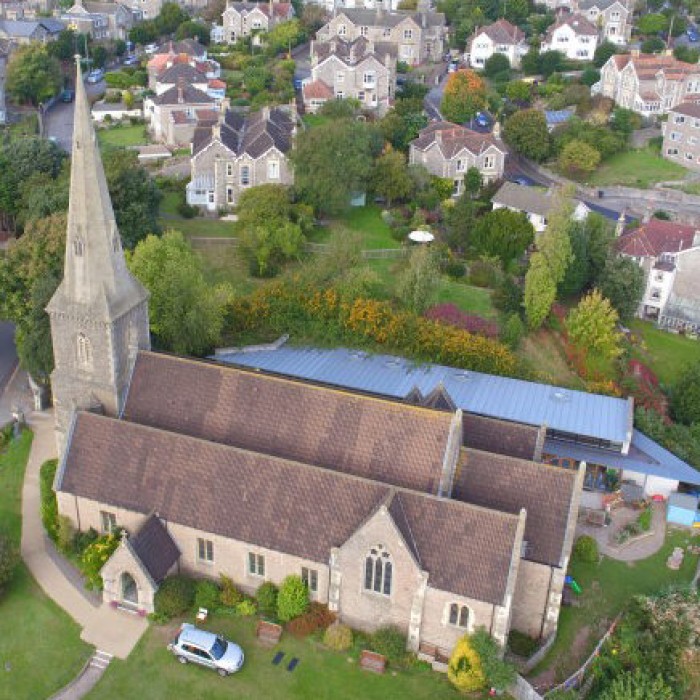Survey techniques – alternatives to conventional building measurement and condition inspections
— 07 Dec 2016

Drone's eye view of spire.

Drone operator and landing pad below.

We have recently been exploring and using interactive internal 360 virtual surveys and drone aerial imaging techniques for condition inspections.
The rudimentary use of reference plans and multiple still images for internal inspections and recording may be a thing of the past. www.panopticmotion.co.uk have been demonstrating photographic walk-through surveying, which can be used interactively to tag and annotate building features, condition and specification. Try out their test example of one of our projects at https://my.matterport.com/show/?m=hCuuhoHvYY5. Guests at our 30th birthday party were able to try out the drones for themselves. See video and photos here - http://www.jonathan-rhind.co.uk/blog/jonathan-rhind-architects-30th-anniversary-party/ . Panoptic also carry out piloted drone surveys.
Conventionally, condition surveys of inaccessible, high level parts of buildings such as roofs, chimneys, towers etc. were limited to visual ground inspection, access via mobile cherry picker, specialist rope access or costly scaffolding.
We have recently utilised aerial imaging technology by www.remoteaircraft.co.uk using drones to provide survey detail of a church spire https://www.youtube.com/channel/UC11kUWrsFLW5pyd2vO4y4rQ. Remotely piloted aircraft could provide significant savings over conventional methods especially when space for scaffolding or mobile platforms is restricted.
We are also looking at point cloud surveys which use laser technology to create a digital ‘cloud’ of geometrical points and 3D model showing dimensional accurate materials. The use of 3D digital reconstruction and interpretation of historic buildings has been around for some time as demonstrated by The Digital Heritage group at De Montfort University https://www.youtube.com/watch?v=8vpvLfvE02w. Exciting to see how this technology could be used to show existing fabric as a historical record as well as integrating graphics for repairs and sensitive alterations.